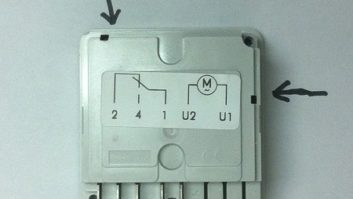Concerning combiners
Apr 1, 2004 12:00 PM, By John Battison, P.E., technical editor, RF
Until the advent of FM, combiners were rarely required. After FM was introduced, the need for a method of feeding two or more FM frequencies into a single FM antenna developed. AM operation had already made it obvious that antenna-originated signals from an adjacent station could feed back into the final stage of a transmitter and produce internal cross modulation. Unfortunately, much shorter wavelength of FM transmissions requires critical spacing in terms of electrical degrees when establishing a filter system.
In the old days, there were few diplexed radio stations. As vertical real estate became more valuable, and stations started locating two or more AM transmitters on the same tower, i.e. multiplexing.
The components used for AM multiplexing are inductors and capacitors, which are finite in size and power handling ability and susceptible to external influences when operated at higher frequencies. The lower frequency of AM operation means that lumped components can be used, and adjustment is less critical than for the FM band. Hand capacity has less effect, and adjustment is simpler, although it must be just as precise.
Evolution of terms and usage
As FM operation increased, stations needed a method of combining two FM outputs into a single FM antenna. The shorter wavelength of FM means that spacing between individual components must be measured in terms of wavelength or electrical degrees. In some cases, coaxial cable is not suitable because the electrical length required is less than the distance between the units. To overcome this problem multiple cavity units were developed using common interior walls. The actual connection between each cavity is a hole in the common wall. This obviates the need for coaxial cable connections with possible electrical length and space problems.
The combiner bears no physical resemblance to the LC combinations found in AM filters. In fact, most combiners look like metal tanks with coaxial cables attached. Combiners form an unusual tuned circuit consisting of a cavity with one or more loops or probes connected to the coaxial cable. A cavity may be circular or rectangular. When the cavity is excited by the desired RF frequency a tuning rod system or probe is adjusted to tune the cavity to resonance.
A cavity resonator can oscillate in many different modes. The major mode is obtained by adjustment of the fine-tuning probe as the cavity is tuned to resonance. The mechanism of a cavity resonator can be compared to an LC circuit using small values of inductive and capacitive reactance with the internal surfaces of the cavity acting as the LC units.
Although cross-coupled bandpass filters have replaced notch filters, it is important to know how a notch filter functions. Its purpose is to prevent an undesired signal from passing. It has a similar effect to a series-resonant LC circuit that is used in AM diplexing. Notice that the notch filter is connected from the transmission line to ground. Its job is exactly what its name implies: to remove, or notch out, the undesired frequency.
Because of the need to observe correct system electrical degree spacing between cavities, and also sometimes for convenience, combiners are often constructed as integrated units consisting of two or more cavities. When this is done a rectangular iris, or opening, is made in the common wall of the cavity.
Cavities may be regarded as sections of coaxial cable whose size is determined by the need to obtain the optimum impedance of about 77O and avoid excessive power loss. In a cavity of 48″ by 24″ the tuning probe may be 3″ to 6″ in diameter, depending on the power level, and extend as much as 30″ into the cavity.
Getting better
As bandpass filters became more popular composite notch filter and bandpass units were developed. The notch filter is formed as part of the total cavity structure with a cavity opening directly into the first section of bandpass filter. Any undesired signals that reach this bandpass filter are taken care of by the notch filters if necessary. Insertion loss and size increase with added BP sections.
Figure 3 shows a desired bandpass characteristic curve and the impact of notch filters at each end. Full bandpass utilization has become increasingly important as the FM signal becomes more complex and broader. A formerly unconsidered factor is known as group delay. The finite time required to pass through a filter increases with distance from the center frequency. Excessive group delay will introduce distortion.
To reduce insertion losses, improve bandpass operation and reduce size, the cross-coupling shown in Figure 4 has mainly replaced the simple bandpass filter. A lower power feedback coaxial line is connected between the first and last bandpass cavities. This provides a parallel transmission path that is tuned to cancel out unwanted frequencies at each end of the filter. This results in a bandpass characteristic that does not introduce excessive group delay and is similar to the one shown in figure 2 without using notch filters.
The input and output loops have to handle the full transmitter power. maller, low-power loops are also mounted in the input and output cavities. These form part of the feedback circuit and are connected by the small coaxial cable.
E-mail Battison at[email protected].
Illustrations provided by Shively Labs.












